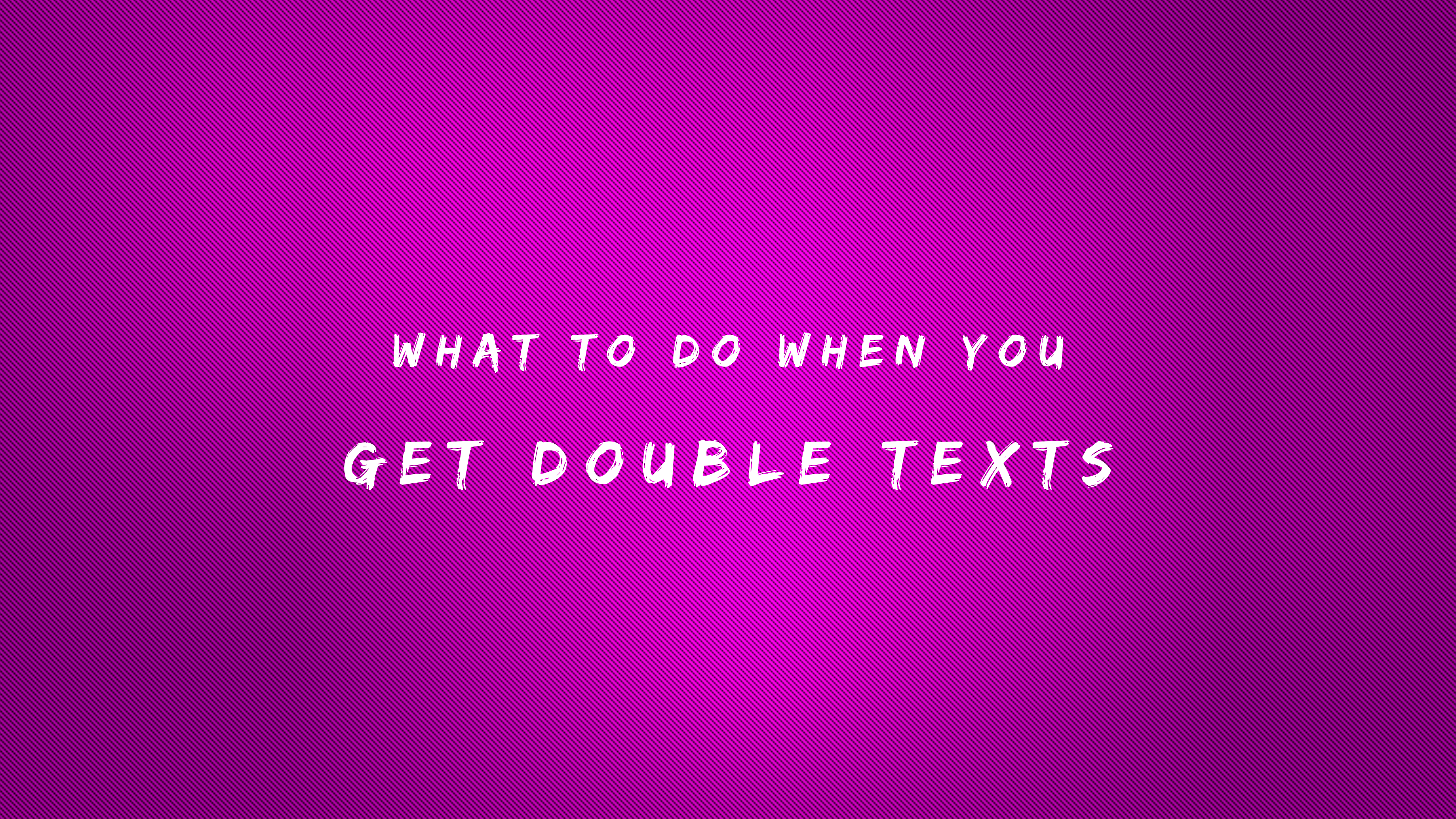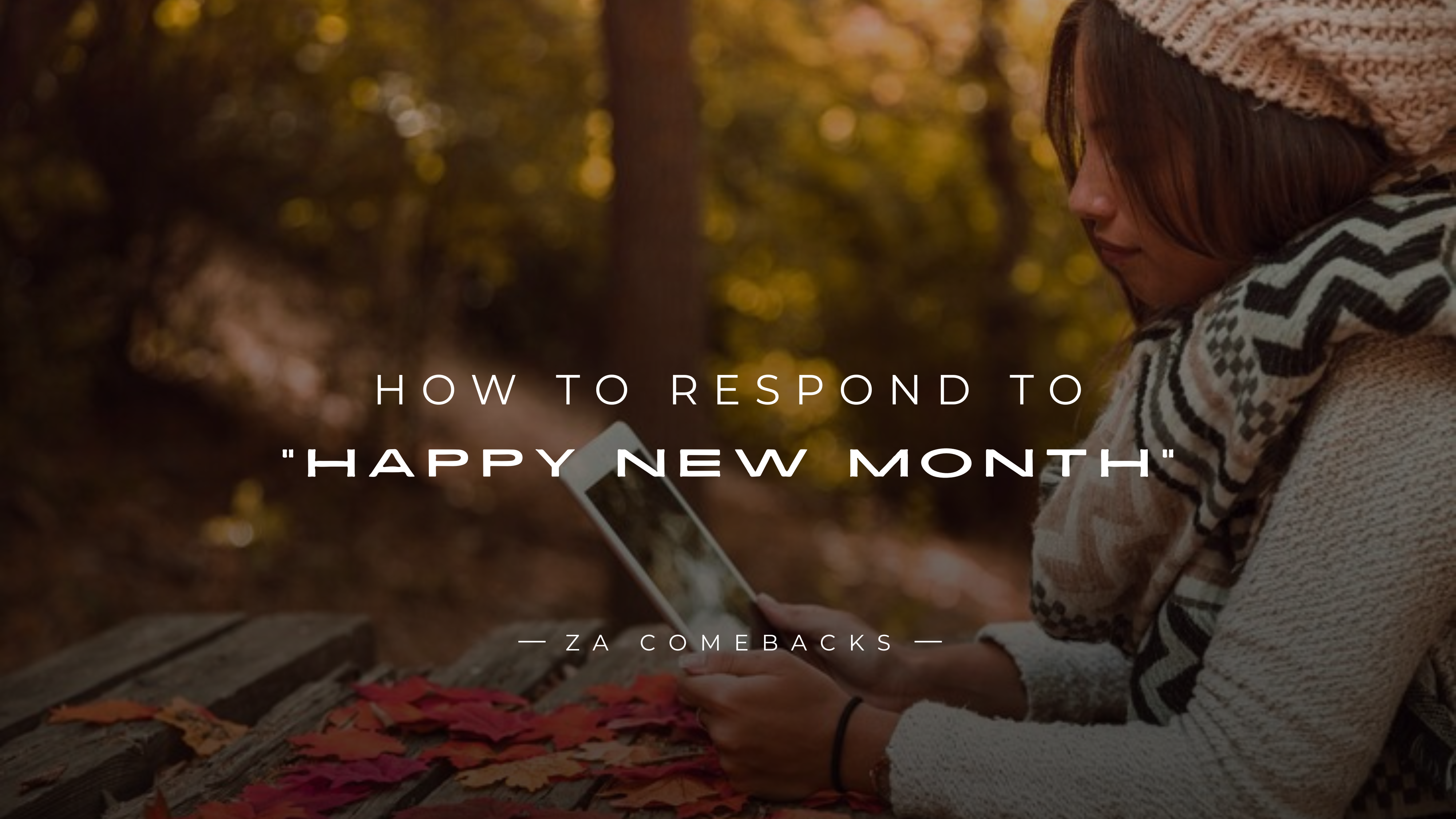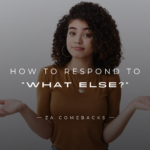Double texts occur when someone sends you the same message twice, either by mistake or intentionally. This can be confusing and sometimes frustrating, especially if you’re unsure whether it’s a technical issue or something else. Understanding what’s behind these messages can help you respond appropriately and avoid potential awkwardness.
Why Understanding Double Texts Matters
Navigating double texts effectively can improve your communication skills and help you manage your relationships better. Knowing how to handle these messages can prevent misunderstandings and ensure clear, respectful interactions, whether they’re from friends, family, colleagues, or a significant other.
Common Reasons for Double Texts
- Technical Glitches
Sometimes, double texts are simply the result of a technical hiccup. Messaging apps occasionally malfunction, causing your messages to be sent twice. If you suspect this might be the case, it’s worth checking if the sender has experienced similar issues with their phone or app.
- Busy Schedules and Mistakes
Another common reason for double texts is that people can be busy or distracted, leading them to unintentionally send the same message twice. It might be as simple as someone hitting “send” before the first message has gone through.
- Intentional Follow-Ups
In some cases, double texts are deliberate. The sender might be trying to emphasize the importance of the message or ensure you’ve seen it. If the follow-up message seems to be stressing urgency or has a different tone, it’s likely intentional.

150+ Responses To Double Texts
Casual Responses
- Hey! I got your double texts. What’s up?
- Looks like you’re eager to chat! What’s going on?
- Double messages! What’s on your mind?
- I see you’ve got something to say. What’s up?
- Hey, I got both of your texts. What’s the scoop?
- Wow, someone’s excited! What’s happening?
- You’ve got my attention with those double texts. What’s up?
- Hey there! I just saw your messages. What’s going on?
- Two messages in quick succession—what’s the news?
- You got your texts! What’s on your mind today?
Clarification Needed
- I saw your two messages, but I’m unsure what you mean. Can you clarify?
- I received both texts, but I’m a bit confused. Could you explain a bit more?
- I got your messages but need more details to understand them fully. Can you help?
- Your double texts are here. Can you give me more context or details?
- I see you sent two messages. Could you clarify what you’re referring to?
- I got both texts, but I’m unclear on what you’re asking. Can you elaborate?
- I’m not sure what you meant with your double texts. Can you provide some more information?
- I received your messages. Please explain what you need.
- I’m unsure what you’re getting at with the two messages. Can you clarify?
- I got your texts, but I’m a bit confused. Can you give me more details on what you’re talking about?
Busy/Delayed Responses
- Sorry for the late reply! I just saw your messages. What’s up?
- Apologies for the delay. I was tied up and got your double texts—what’s happening?
- I was just catching up on messages. Sorry for the wait! What’s up with the double texts?
- I’m a bit behind on messages. Thanks for your patience! What do you need?
- Sorry for not getting back to you sooner. I’ve seen your messages now. What’s up?
- I was busy earlier. I just saw your two texts—what’s happening?
- Apologies for the delay. I got both of your messages now. What’s going on?
- Hey, sorry for the late response. I was occupied. What’s up with the double texts?
- I was just catching up on messages. Sorry for the delay! What’s going on with the two texts?
- My apologies for the late reply. I’ve now seen both of your texts. What’s up?
Emotional Response
- I noticed you sent two messages. Is everything okay? How can I help?
- Something might be bothering you. Do you want to talk about it?
- I see you’ve been sending multiple texts. Are you alright? What’s going on?
- I got both messages, and I’m here for you. Is there anything you need to discuss?
- I received your double texts, and you might be feeling something. How can I support you?
- I noticed you’re sending a lot of messages. Are you feeling okay? Let’s talk.
- It looYou have something on your mind. I’m here if you need to share.
- I see you sent two texts, but something is up. Let me know if you need to chat.
- I got both messages. Are you feeling overwhelmed, or is there something specific you want to talk about?
- You might need to talk about something. I’m here if you need to share your thoughts.
Clarification on Intent
- I received your double texts. Was there something specific you wanted to discuss?
- I saw your two messages. Can you let me know what you’re looking for?
- You sent a couple of texts. Was there something you needed from me in particular?
- Just checking in—did you mean to send both messages or was there something you wanted to clarify?
- I noticed you sent two messages. Can you tell me more about what you’re referring to?
- You got both texts. Could you clarify what you’re trying to say or ask?
- I see you’ve sent a couple of messages. What exactly are you looking for here?
- I received your messages, and I’m not sure what you need. Can you provide a bit more detail?
- I got both of your texts. Can you clarify what you’re asking or trying to communicate?
- I saw your double messages. Was there a specific point or question you wanted to address?
Engagement and Follow-Up
- I got your messages! What’s the latest? Let’s dive into it.
- I see you’re eager to chat. What’s new, or what should we discuss next?
- Thanks for the double texts. What do you want to focus on today?
- I received your messages. What’s the main topic or question you have?
- I got both of your texts. What’s the next step, and how would you like to proceed?
- I’m here and ready to discuss whatever’s on your mind. What’s up?
- I see your messages. What’s the priority for us to talk about right now?
- Thanks for reaching out twice! What’s the main point you want to cover?
- I noticed your double texts. Let’s keep the conversation going—what’s the next thing you want to discuss?
- You got your messages! What do you want to tackle first, or what’s the plan moving forward?
Formal or Professional
- Thank you for your messages. How may I assist you further?
- I received both of your texts. Please provide additional details on your request.
- Thank you for reaching out. I have noted your double messages. How can I help you today?
- I acknowledge receipt of your two messages. Please clarify your request or provide more information.
- I’ve received both of your texts. Please let me know how I can assist you with this matter.
- Thank you for your follow-up messages. What specific information or assistance do you need?
- I have reviewed your double texts. What do you require, or what action needs to be taken?
- Your messages have been received. Please provide further details or instructions as needed.
- Thank you for your correspondence. I see you sent two messages. How may I be of service?
- I’ve received both of your messages. Please clarify the details so I can address your request appropriately.
Playful/Teasing
- Double texts? Someone’s excited! What’s the big news?
- Looks like you’re eager to chat! What’s got you so chatty today?
- Two messages in a row—did you forget something in the first one?
- Wow, are you sending multiple texts? You must have a lot to say!
- Double texts, huh? Did your phone act up, or are you just super enthusiastic?
- You must have some exciting news to send two messages. Spill the beans!
- Someone’s keen on keeping the conversation going! What’s up?
- Double texting? You must be on a roll. What’s the latest?
- I see you’ve got double the messages. Did you have a lot to share, or was it a slip?
- Two messages in quick succession—either you’re excited or your phone’s quirky!
Acknowledging Overwhelm
- I see you’ve sent multiple texts. It looks like you might have a lot on your mind. How can I help?
- It seems like you’ve been trying to reach me. If you’re feeling overwhelmed, let me know how I can assist.
- I noticed you sent a couple of messages. If you’re feeling a bit overwhelmed, I’m here to help.
- There might be a lot going on for you right now. How can I support you with these messages?
- I received both of your texts. If you’re feeling overwhelmed, let’s work through it together.
- I understand that you’ve sent several messages. If you need to talk through anything, I’m here for you.
- It seems like you’re dealing with quite a bit. How can I assist you with the messages you sent?
- I got your double texts. If you’re feeling swamped, let me know how I can make things easier.
- I see you’ve been sending multiple messages. If you’re feeling overwhelmed, let’s figure it out together.
- I noticed the multiple messages. If there’s a lot on your plate right now, I’m here to help with whatever you need.
Reassurance
- No worries, I’ve got both of your messages. Everything’s okay on my end!
- I saw your double texts, and everything is fine. How can I assist you today?
- Thanks for reaching out twice. Rest assured, I’m on top of it!
- I got both of your messages, and all is well. Let me know what you need!
- I received your double texts, and everything is under control. What can I do for you?
- No need to stress—I’ve seen both of your messages. How can I help?
- I’m here, and I’ve received your messages. Everything’s okay; just let me know what you need.
- Thanks for sending both texts. Everything is fine, and I’m ready to assist!
- I saw your two messages. Don’t worry; I’m handling it. What’s up?
- No need to worry—both messages came through. How can I help with what you need?
Humorous Nudge
- Double texting, huh? Did you have a moment of déjà vu, or just excited to chat?
- Two messages in quick succession—someone’s really on a roll today!
- Looks like your phone couldn’t wait to send that second message. What’s up?
- I see you’re doubling down on messages. Did your first text need a sequel?
- Double texts? Your enthusiasm is noted! What’s the latest?
- Sending multiple messages? Did your first one have a cliffhanger or something?
- You have so much to say that you have to send two messages. What’s the scoop?
- You must have had a lot on your mind to send two messages. What’s going on?
- Double texts—did your first one need a follow-up, or are you extra excited?
- Wow, are you sending a sequel to your first message? Your excitement is contagious!
Confirming Receipt
- I received both of your messages. What can I help you with?
- I’m just confirming that I’ve seen your double texts. How can I assist?
- Thanks for sending two messages—I’ve got them both. What’s next?
- I’ve received your messages. Please let me know how I can assist.
- You are confirming receipt of both texts. What’s the next step, or what do you need?
- I got both messages—I’m just checking in to see what you need from here.
- I see you sent two texts. I’ve got them both. How can I help?
- Thanks for reaching out with two messages. I’ve received them. What can I do for you?
- I am confirming that I received your double texts. Let me know what’s up!
- I’ve got both of your messages. Please let me know how I can assist you further.
Request for Specifics
- I received both of your messages. Please provide more details on what you need.
- You got your double texts. Could you clarify exactly what you’re asking for?
- I saw your messages. Could you give me more specifics on what you’re referring to?
- Thanks for sending both texts. Please provide more details so I can assist you better.
- I received both messages. What specific information or action are you looking for?
- I’ve got your double texts. Could you elaborate on what you need or want to discuss?
- Your messages came through. Can you give me more context or specifics?
- I see you sent two texts. What exactly are you requesting or needing from me?
- I just received your messages. Please provide the details so I can address your needs.
- Thanks for the follow-up texts. Could you provide more specifics on what you’re looking for?
Offering to Call or Meet
- I got both of your texts. Would it be easier to discuss this over a call?
- I see you’ve sent a couple of messages. How about we set up a call to go over this?
- Thanks for your messages. Would you like to discuss this over the phone or meet in person?
- I received your double texts. If it’s more convenient, we can discuss this on a call.
- I got your messages. How about a quick call to clarify things? Let me know what works for you.
- I see you’ve sent two texts. Should we arrange a call to talk this through?
- Your messages are noted. Would you prefer to discuss this over a call or in a meeting?
- I’ve received your texts. If it’s easier, we could schedule a call to review everything.
- Thanks for the follow-up messages. Let’s schedule a call to discuss the details and see if that works for you.
- I got your double texts. Would a phone call or meeting be better to go over this?
Redirecting Conversation
- I see you sent two messages. Let’s focus on [new topic]—what’s your take on that?
- Thanks for the double texts. Let’s shift to discussing [new topic] instead.
- I got your messages. Let’s redirect to [new topic]. What are your thoughts on this?
- I received both of your texts. How about we talk about [new topic] now?
- I see you’ve sent multiple messages. Let’s switch gears and discuss [new topic]. What do you think?
- Thanks for the follow-ups. Let’s pivot to [new topic]. How do you feel about that?
- I noticed your double texts. Can we move on to talking about [new topic] instead?
- I got your messages. Let’s redirect the conversation to [new topic]. What’s your input?
- I received both of your texts. How about we discuss [new topic] now?
- I see your double messages. Let’s change the subject to [new topic]. What’s your opinion on that?
How to Respond to Double Texts
- Assess the Context
Before you respond, consider the context of the messages. Are they from a close friend or a colleague? Is there any indication of urgency or concern in the second message? Understanding the context can guide how you reply.
- Keep Your Response Simple
When replying, keep it straightforward. Acknowledge the double text casually, such as, “Got your messages! No worries about the double text.” This can help ease any potential awkwardness and keep the conversation flowing smoothly.
- Address Any Potential Misunderstanding
If the double texts stem from a misunderstanding, address it calmly. Clarify any confusion by referring to the messages’ content and providing any necessary explanations.
Double Texts from Friends and Family
- Responding to Personal Contacts
When receiving double texts from friends or family, approach your response empathetically. They might have sent the second message out of concern or to ensure you received the first. Acknowledge their effort and respond as you would to any other message.
- Handling Miscommunications
If double texts lead to miscommunication, address it gently. For example, you could say, “I received your messages. Did you need anything else?” This approach helps clear up any confusion without making the sender feel awkward.
- Setting Boundaries if Necessary
If double texts become frequent or intrusive, it might be necessary to set boundaries. Let the person know you prefer to receive only one message about the same topic and suggest a more efficient communication method.
Double Texts from Colleagues
- Professional Etiquette
Double texts indicate urgency or oversight in a work setting. Maintain professionalism in your response. You might say, “I received your message twice—was there something specific you needed?”
- Managing Work-Related Misunderstandings
If the double text concerns work, address the issue promptly. If it repeats a previous request or information, clarify what you’ve done or need to do next.
- Following Up Efficiently
In a professional context, following up effectively can help avoid repeated texts. Confirm receipt of the initial message and provide any updates as needed to prevent the need for additional messages.
Double Texts in Romantic Relationships
- Understanding the Intent
In romantic relationships, double texts can sometimes signify eagerness or concern. Note the tone and content of the messages to understand their intent.
- How to Communicate Effectively
Communicate openly about the double texts. You might say, “I noticed you sent the same message twice. Is there something you want to discuss further?” This fosters honest communication and helps address any underlying issues.
- Avoiding Misinterpretation
Be mindful of how your responses might be interpreted. Double texts in relationships can sometimes be a sign of anxiety or insecurity. Reassure your partner and discuss any concerns openly to avoid misunderstandings.
When to Address the Issue Directly
- Deciding Whether to Bring It Up
If double texts are becoming a pattern and causing concern, it might be worth addressing the issue directly. Before bringing it up, evaluate whether it’s affecting your communication and relationships.
- Tips for a Constructive Conversation
When discussing double texts, approach the conversation with empathy. Use “I” statements to express how you feel and offer solutions. For example, “I feel overwhelmed with multiple messages about the same topic. Can we find a better way to communicate?”
- Understanding the Other Person’s Perspective
Consider the other person’s perspective during the conversation. They may have reasons for sending double texts you’re unaware of. Understanding their point of view can help in finding a mutually agreeable solution.
Avoiding Double Texts in the Future
- Best Practices for Clear Communication
To minimize the chances of sending duplicate texts, be clear and deliberate in your messaging. Review your messages before sending them to ensure that you’re not inadvertently duplicating content.
- Tools and Apps to Prevent Mistakes
Some messaging apps offer features that can help prevent accidental double texts. For example, you might find settings that allow you to review messages before sending or to confirm if a message was delivered.
- Setting Expectations with Contacts
Communicate your preferences regarding messaging. If you prefer to receive only one text, let your contacts know. This can help set expectations and prevent future occurrences of double texts.
Conclusion
In conclusion, receiving double texts can be overwhelming, but with the right responses, you can turn these situations into opportunities for connection and clarity. Whether you choose to keep things light-hearted or address the message more directly, having a variety of replies at your disposal can make a big difference. For more tips on handling different types of messages, you might also find our guide on responding to “Good Luck” useful. Check out:
How to Respond to “Good Luck”:150+ Replies
FAQs
Q. What should I do if I keep receiving double texts from the same person?
If double texts are persistent, address the issue directly with the sender. Clarify any potential misunderstandings and suggest a more effective way to communicate.
Q. How can I prevent sending double texts accidentally?
To avoid sending double texts, review your messages before sending them. Use messaging apps that offer features to prevent accidental resending.
Q. Is it rude to not respond to a double text?
It’s not necessarily rude, but it’s generally good practice to acknowledge the sender’s messages. If the double text seems unimportant, a simple acknowledgment can suffice.
Q. How do I explain a double text to a friend or colleague?
You can explain a double text by acknowledging the mistake and providing context. A straightforward response like, “Sorry for the duplicate message; I just wanted to ensure you received it,” usually works well.
Q. Can double texts signify something more serious in a relationship?
Double texts can sometimes indicate anxiety or insecurity in a relationship. If this becomes a pattern, it’s important to communicate openly with your partner to address any underlying issues.










